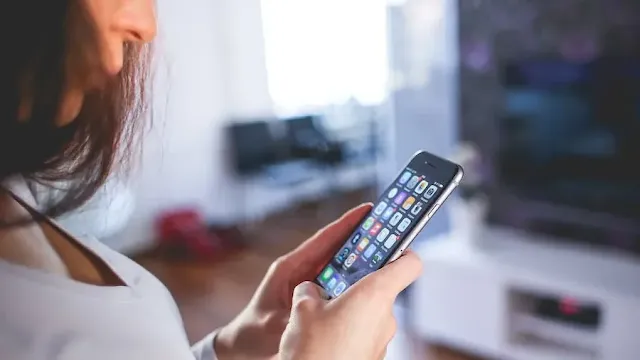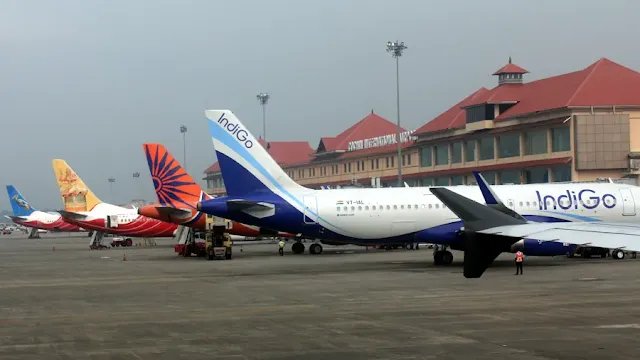Traveling to India with mobile phones raises many questions: How many phones can I carry without paying customs duty? Are there limits on domestic flights? What about international travel? This 2025 guide answers these questions, covering Indian customs rules, duty-free allowances, and practical tips for a hassle-free journey.
Table of Contents
- Duty-Free Allowance for Mobile Phones in India
- The Rule of Thumb for Carrying Smartphones to India
- Can I Carry 3 or 4 Phones to India?
- How Many Phones Are Allowed on Domestic Flights in India?
- How Much Is Customs Duty on Mobile Phones in India?
- Can I Carry 2 Mobile Phones in Flight?
- How Much Electronics Can I Take to India Without Duty?
- Tips for Smooth Travel With Multiple Phones
- Frequently Asked Questions About Carrying Phones to India
Duty-Free Allowance for Mobile Phones in India
Indian customs regulations, governed by the Central Board of Indirect Taxes and Customs (CBIC), allow travelers to bring one mobile phone duty-free as part of their personal effects. This applies to both Indian residents and foreign tourists arriving from countries other than Nepal, Bhutan, or Myanmar, provided the phone is for personal use. The duty-free allowance for personal items is up to ₹50,000 (approximately $600 USD) for adults who have stayed abroad for more than three days.
The Rule of Thumb for Carrying Smartphones to India
As of 2025, you can bring one new mobile phone per person into India without paying customs duty. This phone must be for personal use—either for staying connected during your visit or as a gift. The term "personal use" is key; it means the device should serve your communication needs or be a genuine gift, not intended for resale. If you exceed this limit, the rules become more complex, often requiring declaration and payment of customs duties.
Can I Carry 3 or 4 Phones to India?
If you're planning to bring more than one new smartphone, here’s what to consider:
- Declaration and Customs Duty: Any additional new phones, including sealed phones, beyond the one allowed per person must be declared at customs. You’ll likely need to pay customs duty, which is based on the phone’s value.
- Personal Use vs. Commercial Quantity: Carrying two phones might still be considered personal use, especially if they’re different models. However, bringing 3 or 4 phones, particularly if they’re new and identical, may lead customs officials to suspect commercial intent, resulting in higher duties or the need for an import license.
- Used Phones: A used phone (e.g., your personal device) alongside a new one is generally not subject to the same restrictions. Ensure it’s clearly for personal use to avoid issues—customs may ask for proof like receipts or signs of usage (e.g., a SIM card installed).
Customs officials often focus on high-end devices like iPhones. If you’re carrying multiple iPhones, be prepared for scrutiny. For example, a traveler carrying a Motorola phone faced fewer questions compared to someone with an iPhone, as officials tend to target premium devices for potential resale.
How Many Phones Are Allowed on Domestic Flights in India?
For domestic flights within India, there are no specific limits on the number of mobile phones you can carry in your hand luggage, as per the Directorate General of Civil Aviation (DGCA) guidelines. However, all devices must be screened at security checkpoints, and you should ensure they’re powered off or in airplane mode during takeoff and landing. If you’re carrying multiple phones, especially new ones in sealed boxes, customs rules may still apply if you’ve recently arrived from an international flight and are connecting domestically.
How Much Is Customs Duty on Mobile Phones in India?
The customs duty on mobile phones in India is significant, aimed at protecting local manufacturers. As of 2025, the basic customs duty on electronics, including mobile phones, is 20%, with an additional 18% Goods and Services Tax (GST) and a social welfare surcharge of 2%, totaling around 40% of the phone’s assessed value. For example, a phone valued at ₹60,000 would incur approximately ₹24,000 in duties. Always check the latest rates on the CBIC website, as they can change.
Can I Carry 2 Mobile Phones in Flight?
Yes, you can carry 2 mobile phones in your hand luggage on a flight to India. It’s common for travelers to have two phones—one for personal use and another for work—with separate SIM cards. However, if both are new, the second phone may be subject to customs duty if its value exceeds the ₹50,000 duty-free allowance. To avoid complications, unbox the second phone, insert a SIM card, and show signs of use to indicate it’s for personal purposes.
How Much Electronics Can I Take to India Without Duty?
Besides one mobile phone, you can bring other electronics like one laptop and one tablet duty-free, as long as their combined value stays within the ₹50,000 allowance. For example:
- Laptops: One laptop is allowed duty-free. A second laptop must be declared, and you’ll pay customs duty unless it’s used and for personal purposes.
- Tablets: One tablet falls under the duty-free allowance, but multiple tablets may attract duties if their value exceeds the limit.
- Other Devices: Items like smartwatches, cameras, and power banks are permitted, but their total value must not exceed ₹50,000 to avoid duties.
If the total value of your electronics exceeds ₹50,000, you’ll need to declare them via the red channel and pay the applicable duty.
Tips for Smooth Travel With Multiple Phones
- Keep Receipts Handy: Carry purchase receipts for new phones to clarify their value for customs duty calculations.
- Declare Honestly: If carrying more than one new phone, use the red channel at customs to declare them. Transparency prevents penalties or confiscation.
- Know the Rules: Stay updated on customs regulations, as they can change. Check the CBIC website before traveling.
- Use Courier Services: If bringing phones for others, consider couriering them to India. This may incur shipping costs and duties but simplifies customs clearance at the airport.
- Unbox New Phones: Unbox new phones, insert a SIM card, and show signs of use (e.g., photos or apps) to prove they’re for personal use, not resale.
By preparing ahead and following these tips, you can ensure a smooth entry into India with your devices, avoiding unnecessary delays or fees.
Frequently Asked Questions About Carrying Phones to India
How Many Phones Can I Carry to India Without Customs Duty?
You can carry one new mobile phone per person into India without paying customs duty, as long as it’s for personal use and its value is within the ₹50,000 duty-free allowance.
Can I Carry 4 Phones on a Plane to India?
Yes, you can carry 4 phones in your hand luggage, but only one is duty-free. The other three must be declared at customs, and you’ll likely pay duties if their combined value exceeds ₹50,000.
How Much Electronics Can I Take to India Without Duty?
You can bring electronics worth up to ₹50,000 duty-free, including one mobile phone, one laptop, and one tablet. Exceeding this limit requires declaration and payment of customs duties.
How Many Devices Can I Take to India?
There’s no strict limit on the number of devices, but their total value must not exceed ₹50,000 to avoid duties. Typically, one phone, one laptop, and one tablet are allowed duty-free per person.
How Many Mobile Phones Are Allowed on a Domestic Flight in India?
There’s no specific limit on domestic flights in India, but all phones must be screened at security, and customs rules apply if you’ve arrived from an international flight.
How Much Is Customs Duty on Mobile Phones in India?
Customs duty on mobile phones is around 40%, including 20% basic duty, 18% GST, and a 2% surcharge. For a ₹60,000 phone, expect to pay approximately ₹24,000 in duties.
Can We Carry 2 Mobile Phones in Flight?
Yes, you can carry 2 phones in your hand luggage. However, if both are new, the second may attract customs duty if its value exceeds the ₹50,000 allowance.





















